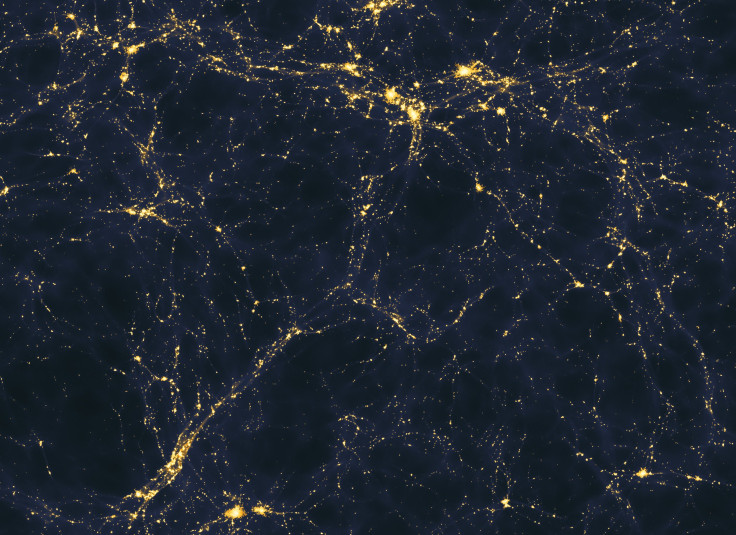Hunt For Cracks In Einstein’s General Theory Of Relativity In Cosmic Voids

The universe we live in is huge, and it’s mostly empty. In fact, the universe’s largest known structure is basically a chunk of empty space — a “supervoid” 1.8 billion light-years across.
It makes sense, then, that scientists looking to understand the workings of the cosmos — including the composition of the mysterious dark matter and dark energy — would study these ginormous empty spaces.
“It’s truly like getting something from nothing,” Paul Sutter, a researcher at the Ohio State University and the co-author of a paper to be published in the upcoming issue of Physical Review Letters, said in a statement, likening the study of these empty spaces to “learning more about Swiss cheese by studying the holes.”
In particular, the researchers are looking for cracks in something that has successfully stood the test of time — Einstein’s general theory of relativity.
The theory, put forward by Einstein in 1915, states that gravity is a product of massive bodies warping space-time. This warping of the fabric of reality creates a gravitational well that pulls in, or attracts, other objects in the universe. The theory and its predictions have been empirically and observationally confirmed time and again.
However, when Einstein formulated his masterpiece, he was not aware of the existence of dark energy — the mysterious force that makes up roughly 68 percent of the universe and is believed to be responsible for its accelerated expansion.
At the time, when Einstein thought the universe was static, he proposed a mathematical fix to his theory — a “cosmological constant” that he said prevented the universe’s expansion. This constant was subsequently abandoned when it was discovered that the universe is, in fact, expanding.
So, if there are any limitations to the theory of general relativity, empty spaces — regions devoid of normal matter but filled with dark energy — are where they would be found.
So far, though, the study of these voids has not revealed any conflicts with Einstein's theory.
For the purpose of this study, Sutter and his colleagues compared computer simulations of voids in space with a portion of data from the Sloan Digital Sky Survey. When they took the physics of voids into account during the analysis of their data, their models of matter density and the growth of cosmological structures witnessed a four-fold improvement.
“Galaxies are like the cities of the universe, full of bright lights and activity, and voids are like the miles and miles of quiet farmland in between,” Sutter said in the statement. “But we’re looking for bits of evidence that general relativity might be wrong, and it turns out that all the activity in galaxies makes those tiny effects harder to see. It’s easier to pick up on effects in the voids, where there’s less distraction — like it’s easier to spot the glimmer of a firefly in a dark cornfield than in a lit-up city bustling with nightlife.”
The analysis and models are publicly available online.
© Copyright IBTimes 2024. All rights reserved.






















